An overview of the publications published in February 2023.
Publications February 2023
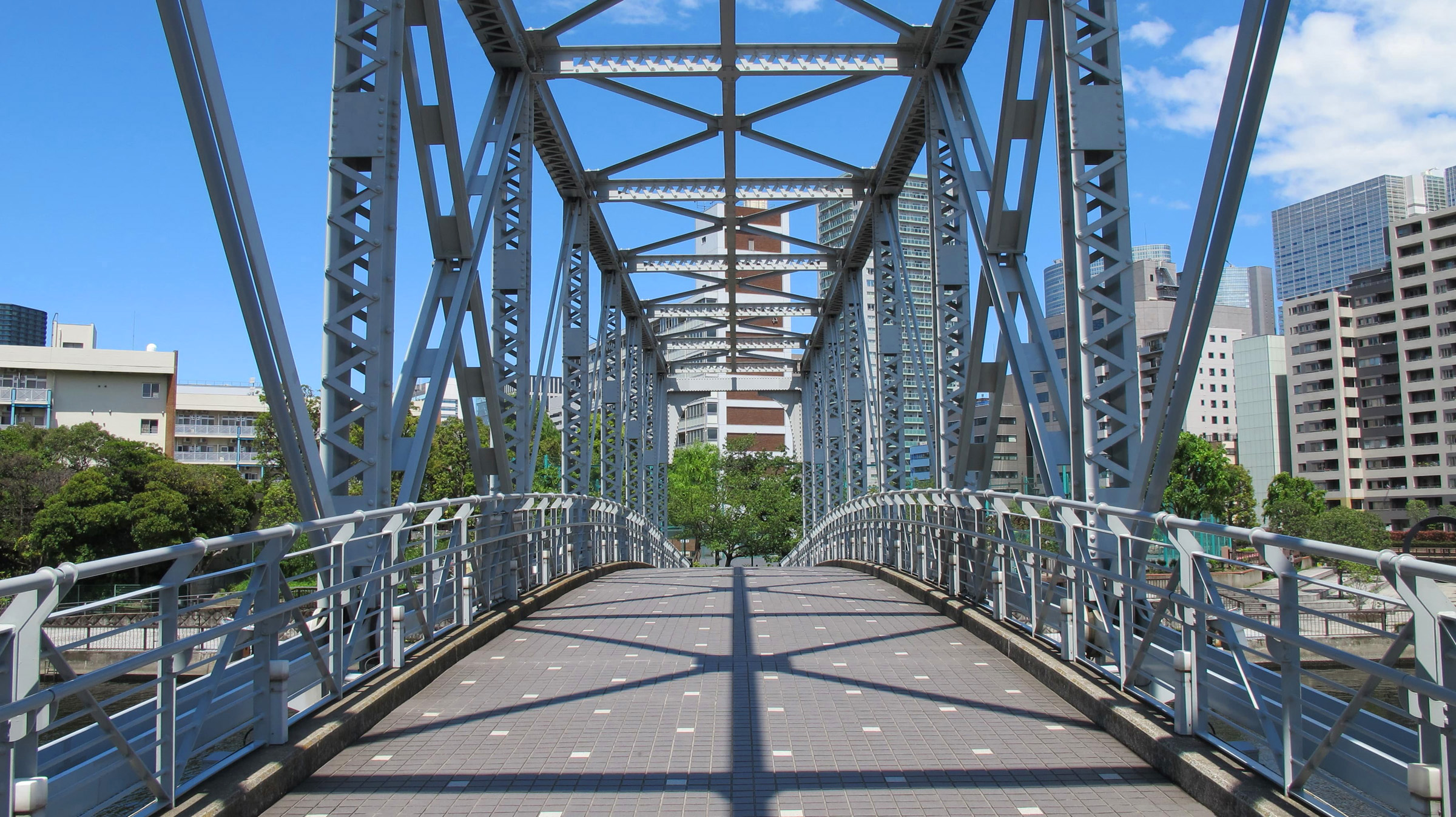

An overview of the publications published in February 2023.
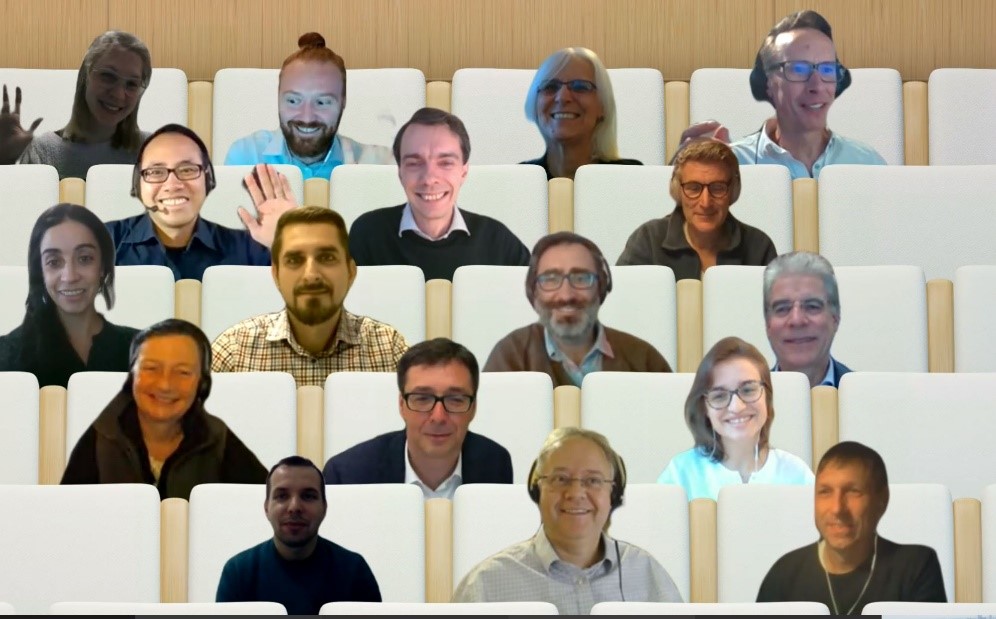
Would you like to see past events and the given presentation hand-outs? We have made a web page with the events since January 2021.
The page is in progress, so we will publish more information later.
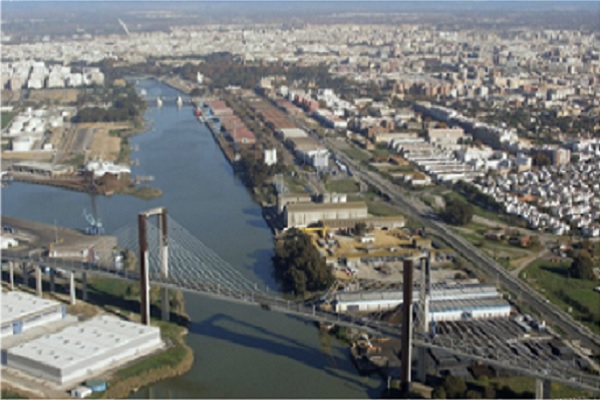
The fourth newsletter for the IM-SAFE project.
This edition includes general update of the project, the PAN EU meeting of the 3th of February 2023, The PAN EU Meeting of 13th of December 2022. DACH Cop Event 18th of November 2022, IM-SAFE CoP Spanish event 17th of November 2022 and a lot of updated publications.
Would you like to receive the next edition of the IM-SAFE Newsletter? Please send an email to info@im-safe-project.eu.
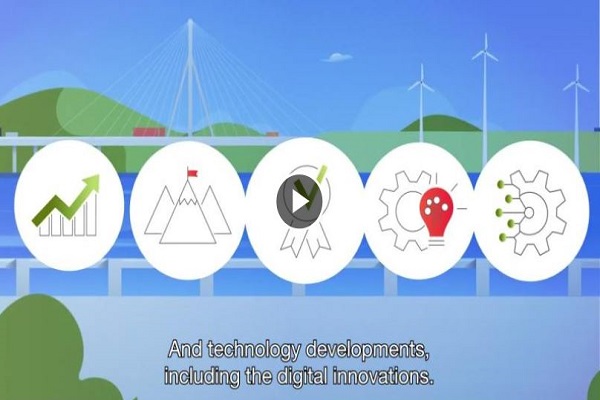
Bridges and tunnels are the critical nodes on the transport infrastructure networks which are vital for the functioning and growth of European and regional economy. See the video.
This infrastructure is ageing and often inadequate to cope with the increasing traffic demands and resilience threats. Such a condition brings high safety risks. IM-SAFE envisions a new and harmonised European standard for monitoring, maintenance and safety of transport infrastructure in a standardised digitalisation approach.
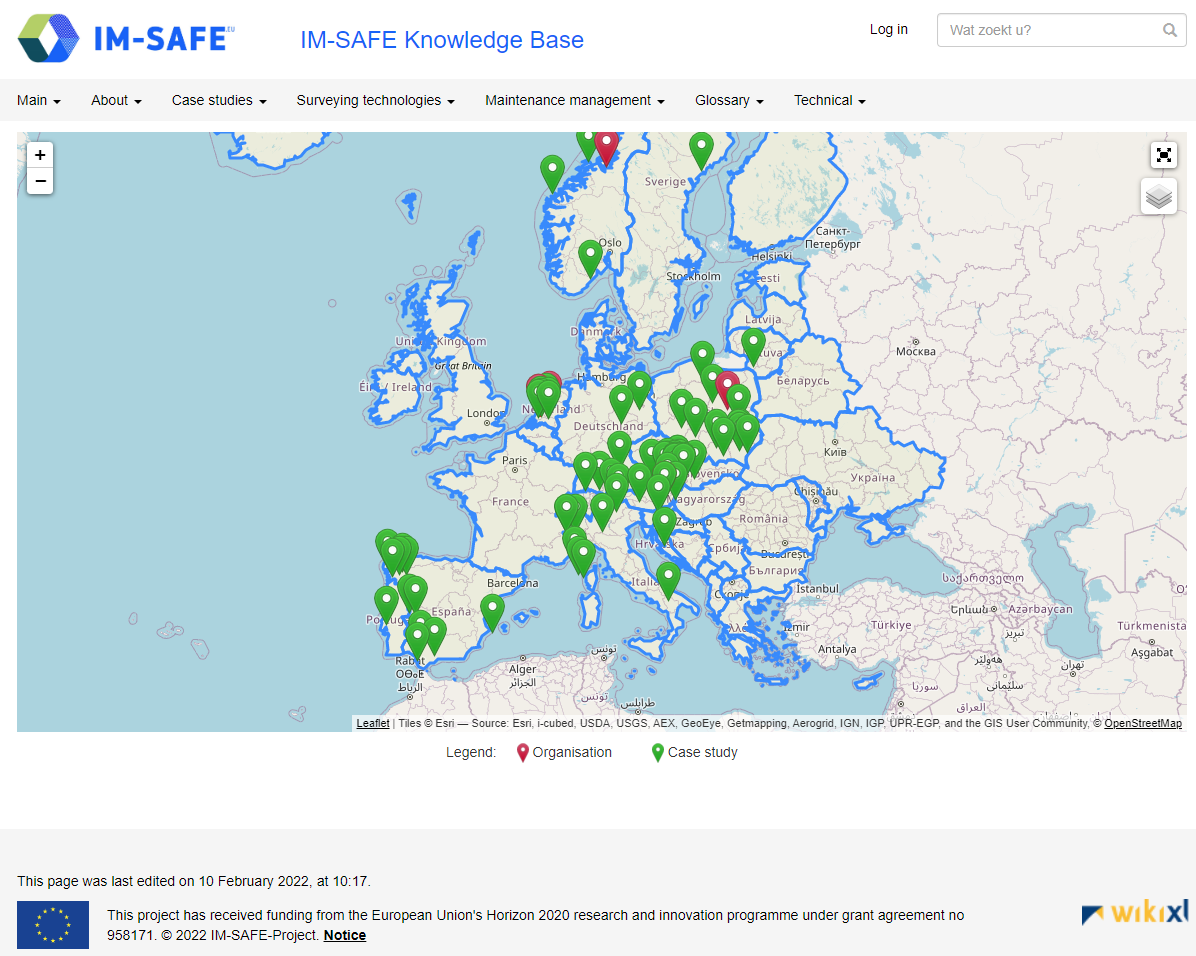
In April 2022, the final version of the IM-SAFE Knowledge Base was delivered. This base, also called IM-SAFE Semantic Wiki, aims to consolidate the (technical) knowledge generated through the partners in the project to a wider and public audience.
From the content perspective, IM-SAFE Wiki provides a joint deliverable that focuses on data and information concerning:
In IM-SAFE Semantic Wiki, there are three main tabs made for:
There is also a Glossary Tab helping readers with the domain terminologies.
From the technical perspective, this knowledge base includes developing a semantic knowledge model populating a database through ArchiXL’s Semantic platform. Semantic knowledge models help us to capture specific domain knowledge that becomes represented as class definitions, their attributes, and relationships. The information is published as “Wiki-Pages” and there are special pages that help readers to navigate through data and information in the system with the help of the knowledge model. These are pre-determined queries, overviews, and map views. This is an open system that is flexible to add new information and present it to the public until the end of the project. The data can be retrieved through open API as explained here. It can also be exported to an open-source format (e.g. JSON, CSV, RDF) that enables reusability and exploitation of information in the future.

The main goals of WP3 are to analyse the current practice of data-informed performance assessment, structural safety evaluation and risk management of infrastructure supported by inspection, monitoring and testing, based on the outcomes of WP1, WP2 and WP4 including direct involvement of the CoP through WP6 and feeding WP5 for the preparation of the mandate for new standards, as well as to develop a proposal for data-informed performance assessment, structural safety evaluation and risk management and proactive maintenance planning for transport infrastructures, to overcome the current barriers using innovative technologies. The proposed methods of safety evaluation, risk management and decision-making regarding maintenance strategy will form the background of the mandate for a standard (CEN) for safety control and maintenance of infrastructures. In addition, the proposed methodology for safety control and decision-making process has been showcased on real examples from TEN-T corridors and regional transport networks.
The project results have been collected in two reports, D3.1 (“appraisal of methods for safety evaluation and risk management”) and D3.2 (“background materials for implementation of decision-making regarding maintenance strategies”), which are also complemented by a proposal for harmonization of terminology.
Deliverable 3.1 provides a comprehensive review of the presently applied technical, environmental, societal, and economic Key Performance Indicators (KPIs) adopted in existing Bridge Management Systems. This analysis includes the classification of types of infrastructure based on typology, vulnerable zones and vulnerability, the categorization of performance indicators for different levels of assessment (network, object and component level) and, additionally, the list of Key Performance Requirement indicators (KPRs) for bridge and tunnel management systems.
Hence, in order to analyze the state-of-the-art for safety assessment methods and evaluation of the possible inclusion of information from diagnostics of structures (based on data from inspection, monitoring and testing), the definition of condition and performance concepts is thoroughly presented. Starting from an overview of deterioration and damage mechanisms for both bridges and tunnels, attention is given to the principles of limit-state, reliability-based approach and performance modelling, Damage Indicators (Dis) for assessment and the implementation of the condition concept in through-life management. Additionally, principles of performance verification methods of new and existing structures and of data-informed assessment approaches are given and the use of data in performance verification is elaborated.
Deliverable 3.1 also introduces the risk concept, providing a general description of the principles of risk representation, together with the proposal for a generic framework for risk management of infrastructure objects. It also includes the classification of hazards and actions for both bridges and tunnels and an example for the probabilistic and data-informed representation of hazardous events for traffic loads on bridges. As such, several methods for assessment and management of risk for infrastructure networks, objects and components are given, as well as the evaluation of the risk management methods aiming at assuring reliability and safety of infrastructure, currently used in the EU, with specific focus on their capability to include information from diagnostics of structures in the quantification of risks (risk classification).
Lastly, in Deliverable 3.1 an appraisal with regards to standardization is given, including a proposal for a framework for data-informed assessment of transport infrastructure.
Download deliverable 3.1 here.
Deliverable 3.2 aims to develop background information and practical guidance material as rationale for the mandate for new standards (CEN) for maintenance and control of large infrastructures, such as bridges and tunnels. This objective facilitates the preparation of recommendations for standardization (WP5). This has been performed with an analysis of the minimum maintenance level guaranteed in the different European countries, evaluating the average infrastructures Condition State Classification and the consequent expected damages (reference to WP1 and WP6), based on the real practice in Europe compared to the requirements in the existing standards:

For more information, click here.
For this purpose, Deliverable 3.2 provides an overview of the principles of through-life management and maintenance of infrastructures, with attention to the main maintenance strategies, conservation processes and investigations, evaluations, and decision-making for maintenance activities.
Thus, principles of maintenance of infrastructure are given, as well as a risk-based framework for maintenance management, a classification of the common typologies of maintenance strategy, in terms of acceptance of risk, the activities required and principles for the selection of maintenance strategies.
Moreover, a critical review of Quality Control Plans and maintenance strategies and tactics (proactive vs. reactive strategies, time-based, condition-based, risk-based tactics) adopted by the CoP members in the different European countries has been analyzed, feeding an interactive map on the IM-SAFE
This Interactive Map (wiki-like) contains information of how different countries in Europe deal with KPIs and Risk management method complements the project results. For Wiki map click here.
Specifically, the Condition-based Maintenance approach for bridges is described, providing an overview of the maintenance strategies commonly used for asset management adopted by the CoP in the different European countries. Deliverable 3.2 also focuses on Quality Management (QM) as part of the wider framework of the Asset Management, which aims to ensure that the resulting built structure satisfies the assumptions adopted in the design, emphasizing its application to all levels, processes and activities of an organization. Asset management is a very broad area and includes a lot of processes that are associated with quality management. For the reason of emphasizing QM, QM was primarily highlighted.
Concerning condition survey, instead, a comparison between various methods (inspection, monitoring and testing), assessing the capital and operating costs of the different solutions has been performed, principles of Information Management are given, focusing on information collected in the maintenance and monitoring phase of an infrastructure. A classification for the relevant information for infrastructures is provided and the impact of costs of information on decision-making is presented, together with an analysis of the Value-of-information based decision-making for investigations activities.
Based on the outcomes of WP3 analysis, the IM-SAFE project proposes in Deliverable 3.2 a framework for the data-informed safety assessment highly interrelated with the through-life management of the transport infrastructure. The need for the clarification of the relationship between the available data, the need of assessment and the maintenance strategies has led to the development of a practical decision-making process for asset owners and operators to facilitate proactive maintenance, that overcomes the current barriers (see results of IM-SAFE WP1) and reflects on the most recent developments of condition survey technologies and structural diagnostics (see results of IM-SAFE WP2 and WP4), with the aim to reduce the risks of sudden collapse and to minimise the lifecycle cost of asset management while ensuring the required service level and quality of the infrastructures are achieved. The decision-making process has been differentiated based on the infrastructure Condition State Classification (see results of IM-SAFE WP2) and takes into consideration the strategic role of each infrastructure within the road network.
It should be highlighted that this proposal has been developed together with the CoP direct involvement (see results of IM-SAFE WP6).
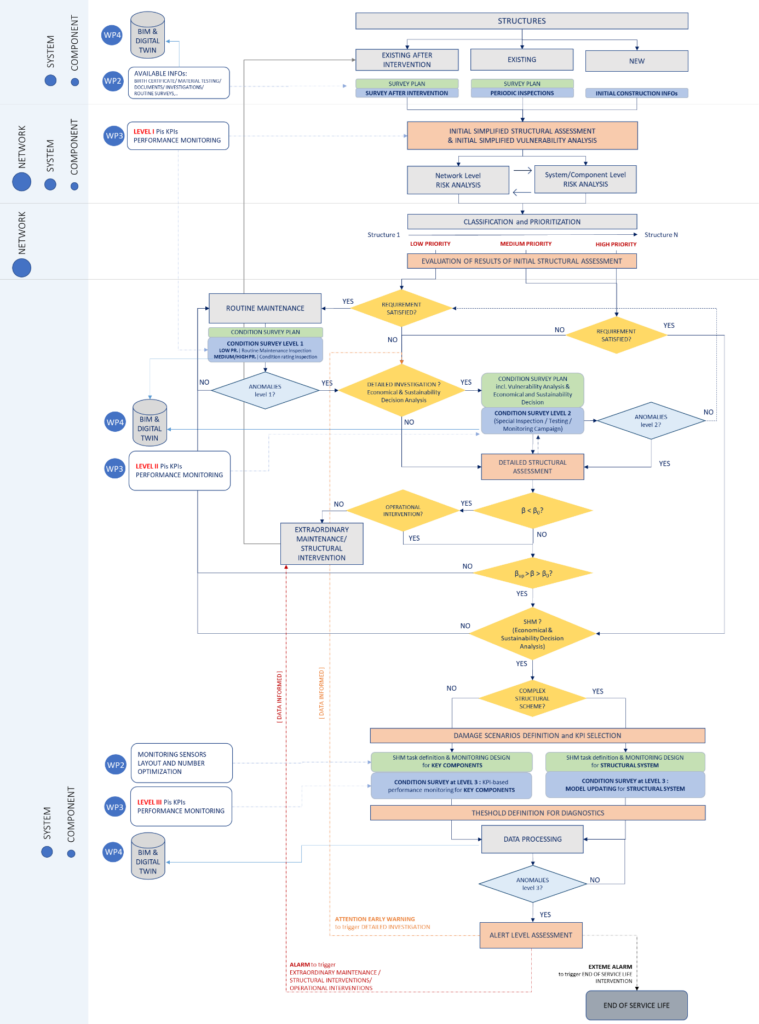
For more information on the assessment flow, click here.
A practical application of the decision-making process described above to real case scenarios located on TEN-T corridors and regional transport networks is provided. The selected case studies are representative of how the proposed decision-making flow is already applied, at different levels, in current practice experiences. To showcase this application, a template has been created in order to summarize the information on each case study and to describe visually and clearly some of the possible paths covered in the decision-making process.
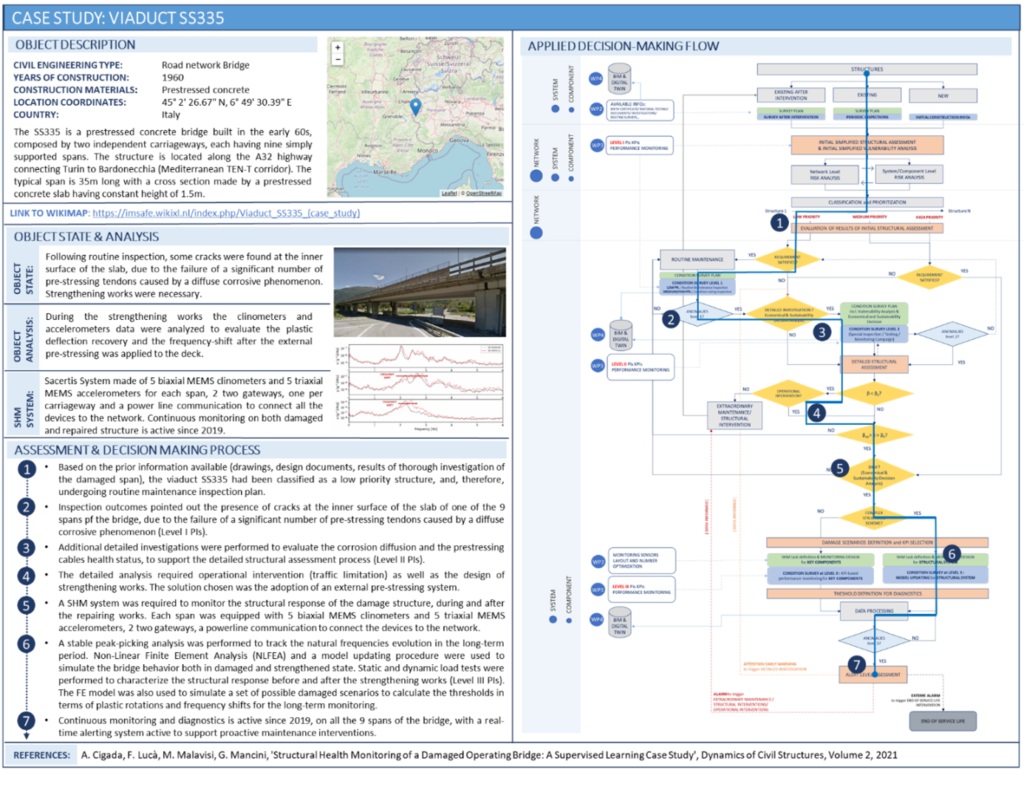
An example for the application of the assessment flow to a case study is provided here.
In conclusion, Deliverable 3.2 provides an appraisal with regards to standardization: a review of current frameworks for Quality Control Plans, a proposal of framework for Preventive Maintenance Procedures and a proposal of framework for data-informed decision-making for safety and risk management of the European transport infrastructures, aiming at a sustainable and efficient management of both single bridges and a network of bridges, are given.

We recently asked dr. hab. Eng. Marek Salamak, professor at the Silesian University of Technology in Poland about his thoughts on the IM-SAFE project and how the results help him in his job.

Tell us something about you, your job and your vision / passion for this job
My biographical notes or CV often contain information that I am a full professor and work at the Silesian University of Technology. But in reality, I am just an ordinary bridge engineer. The only difference is that I am also involved in research and academic activities. It gives me a lot of joy and satisfaction while keeping me on the real problems of bridge engineering – both in terms of design and the rugged environment of the construction site. There is definitely no monotony in my job. I work with young people who want to build bridges in the future. Together with my PhD students, we solve new exciting engineering problems. I consult atypical design solutions. But I am also often on-site during the load test of new bridges. And yet bridges are not only objects that we admire and photograph. We mainly need them to build better relationships between previously separated societies. This is very important in our world. Today so strongly divided by various politicians.
What makes involvement in IM-SAFE interesting and beneficial for you?
Regarding infrastructure safety, we should all get involved as bridge engineers. And not only in this research project but also in our daily work in design, construction, management, and inspections. In what we do, we will always need examples of good practices, effective procedures and appropriate tools. And all this can be found in the IM-SAFE project. And in an international edition.
What is your opinion about the current deliverables? How do they fit in your work?
I must start with the fact that already at this transitional stage of the IM-SAFE project implementation, a lot of knowledge may be helpful to me. But I also have to admit that there is so much of it that it is difficult to get to know everything in a short time. It’s hard to imagine what will happen after the end of the project – lots of reports, presentations, newsletters, brochures etc. Probably the team members find it easier to find themselves in these extensive publications. From the reports published so far, I have a favorable opinion of the Review of methodologies and instruments for diagnostics of transport infrastructure. This report fits well with my engineering practice. We observe many changes in the field of diagnostic methods. Diagnostic technologies are developing rapidly, and we need the most up-to-date state-of-the-art publications.
What could IM-SAFE do to further help you in your job?
The reports that are currently planned will be the most interesting for me. Two of them in particular. Framework for semantic integration of IoT, BIM and GIS of transport infrastructure and Guidelines for Big Data analytics solutions, including Artificial Intelligence. I think they will help us best in the research work we conduct together with my team of doctoral students at the Silesian University of Technology. So I am waiting for them to appear.
Do you have an IM-SAFE message to others and if so which message?
The most important news for those not directly related to the project is my encouragement to the infrastructure managers to take the time to study the results of the IM-SAFE project. They will be the greatest beneficiaries of the research carried out. They should be the subject of the final recommendations. The road and rail administration’s activity in implementing the project results will be necessary. To achieve this goal, however, decision-makers must be aware of the need to ensure appropriate quality in managing their infrastructure. A good reference here is the asset management methods described in ISO standards in conjunction with the BIM methodology, which also already has its standards. However, concerning traditional maintenance or inspection activities, which will be increasingly outsourced, it will be necessary to introduce the requirement to have an accredited quality management system in an inspection under ISO 17024. I do not see any other possibility of implementing the IM-SAFE project results in practice with third parties.

Thursday, February 24th 2022 the Fourth Pan-EU CoP Forum was held. This time the event was organized as a half-day event, dedicated to digitalisation in the future European standardisation for inspection, monitoring and maintenance of transport infrastructures.
Forum chair, Dr. Rizal Sebastian (TNO), comments on how the event went: “It is remarkable to see the active role of public clients, technology market leaders, scientists, and representatives from the standardisation bodies and the European Commission among the nearly 120 participants and panellists. They shared deep thoughts and best practices of digital innovations for monitoring and safety of transport infrastructures. This underlines the importance of digitalisation and European standardisation in this area.”
The IM-SAFE project is paving the road towards the improvement of maintenance policies for the European transport infrastructure. The main goal of this project is to support the preparation of the mandate for CEN in monitoring, safety assessment and risk evaluation for transport infrastructure.
Proposing new standards for diagnostics and safety evaluation of infrastructure is also targeting the collection, use and management of digital data. During the forum on the 24th of February, best practice examples, project outcomes and panel discussions were presented in three sessions:
Please find the links for the presentations as given during the event under the corresponding session title.
The event was also recorded. The recordings of the sessions (which include the video’s in the presentations) can be found under the corresponding session title.

IM-SAFE aims to support the European Commission and the European Committee for Standardization (CEN) to preparing a new standard in monitoring for optimal maintenance and safety of transport infrastructure based on a comprehensive insight into the trends, challenges, best practices, and technology developments, including the integration of digital innovations.
This IM-SAFE online best practice guide report aims to provide a concise summary and overview of the process, knowledge model and information collected and developed within the Semantic Wiki. Each of the case studies listed in this document shows the information related to the best practice (e.g. geolocation, information of the infra assets, applied monitoring systems, etc.) gathered by IM-SAFE project.
This IM-SAFE Knowledge Base supports the pan-European Community of Practice (CoP) actively involved in the development and implementation processes of the new standards on monitoring of transport infrastructure.
A summarizing best practice guide report is available on the IM-SAFE website.

The IM-SAFE report “Recommendations to remove the PEST barriers and prioritisation of risk management areas taking the lessons from recent infrastructure failures” has now been published.
This report addresses the main barriers against well-functioning monitoring and maintenance of transport infrastructure with focus on road and railway bridges and tunnels. Political, Economic, Social and Technological barriers were included in the PEST-analyses.
Several barriers were found and several of them are linked together with the result that in general not enough resources are allocated to monitoring and maintenance of the infrastructure. Transport users do not think about the infrastructure before some failure or closing interrupts their mobility.
The large number of objects makes it challenging to keep track of the maintenance need and remaining lifetime. Some asset management system exists but is not taken into use elsewhere.
A significant part of the infrastructure is getting older, and some are even older than the initial design life. This means that the need for inspection, performance prediction, risk analysis and the actual maintenance work is increasing.
On the other side increasing opportunities for efficient inspection methods and more advanced asset management system makes it possible to get a better overview of the situation and to be able to prioritize better between objects for maintenance.
Some of the barriers are not so easy to overcome e.g., there will always be budget limitations, but one of the most important action that should be taken is to prepare European standards for inspection and maintenance to give the engineer in charge a tool to improve decisions.
The last part of the report is to study recent failures that are caused by lack of monitoring or maintenance or where this is a contributing factor to see if we can learn from these failures. Luckily there are not that many real failures and the only lesson that could be extracted is that maintenance strategies of an object should be emphasized in the design/building phase and that it is important to transfer knowledge and documentation to the operation organization.
The full report is available here on the IM-SAFE website.

Infrastructures are not eternal… but will last for longer if we take good care of them.
Monitoring and maintenance of transport infrastructures is a great, global challenge, and lies at the core of this strategic report. We aim to provide an overview on current and future, trends, needs, standardised methodologies, challenges and main research lines that will give solutions and provide answers to this need.
In the report “Actual and future context of transport infrastructure monitoring and maintenance”, we go through an extensive overview of how European infrastructures, more specifically tunnels and bridges, are ageing, to then, through a brief explanation of the needs for research and standardization in Europe, propose, a description of the methods and the approach that will significantly increase the resilience of inland transport infrastructure by reducing risk vulnerability and strengthening network systems to sudden extreme events, such as climate hazards and man-made events.
In the last 11 months, IM-SAFE has gone through significant advances, that can be found in this strategic report. We share the state of research, research findings and real applications, and share the practice and standardization in different European countries, such as: Spain, Italy, Netherlands, Germany, Poland, etc. W also share an extensive section of conclusions that comprise the applicability of the current practices in infrastructure monitoring and maintenance, a summary of the outlook, providing proposals for future actions, and furthermore, complementary insights from best practices across Europe and complementary insights of risk analysis on barriers and lessons learned.
The report “Actual and future context of transport infrastructure monitoring and maintenance” is now available on the IM-SAFE website.

Friday, November 5th 2021 the Third Pan-EU CoP Forum was held. This time the event was organized as a Symposium, dedicated to surveying technologies, data-informed safety evaluation and risk management for bridges and tunnels.
The IM-SAFE Symposium “Surveying technologies, data-informed safety evaluation and risk management for bridges and tunnels – From the needs to the standardization” presented the most recent project findings and aimed to collect input from the Community of Practice from all over Europe in order to create a solid basis for future standardization on surveying technologies, data-informed safety evaluation and risk management for bridges and tunnels.
The event provided a varied and engaging program, as described in the details below. Please refer to the links for the corresponding presentations.
Introduction
Surveying technologies
Damage indicators and vulnerable elements for bridges and tunnels
Performance indicators for bridges and tunnels
Data-informed assessment of structural performance
Risk assessment and risk-based framework for maintenance management
The IM-SAFE Symposium was organzied by the following experts:
| Agnieszka Bigaj van Vliet, Hendrik van Meerveld, Benjamin Cerar & Diego Allaix | 1 TNO, Delft, the Netherlands |
| Alfred Strauss, Konrad Bergmeister & Lisa Ptacek | 2 University of Natural Resources and Life Sciences, Vienna |
| Giuseppe Mancini, Paola Darò, Monica Longo & Serena Negri | 3 SACERTIS Ingegneria S.r.l., Turin |
| Ana Sánchez Rodríguez, Belén Riveiro Rodríguez, Mercedes Solla & J. Martínez | 4 University of Vigo, Vigo |
| Julius Zach & Patrycja Sanecka | 5 Mostostal, Warszawa, Poland |